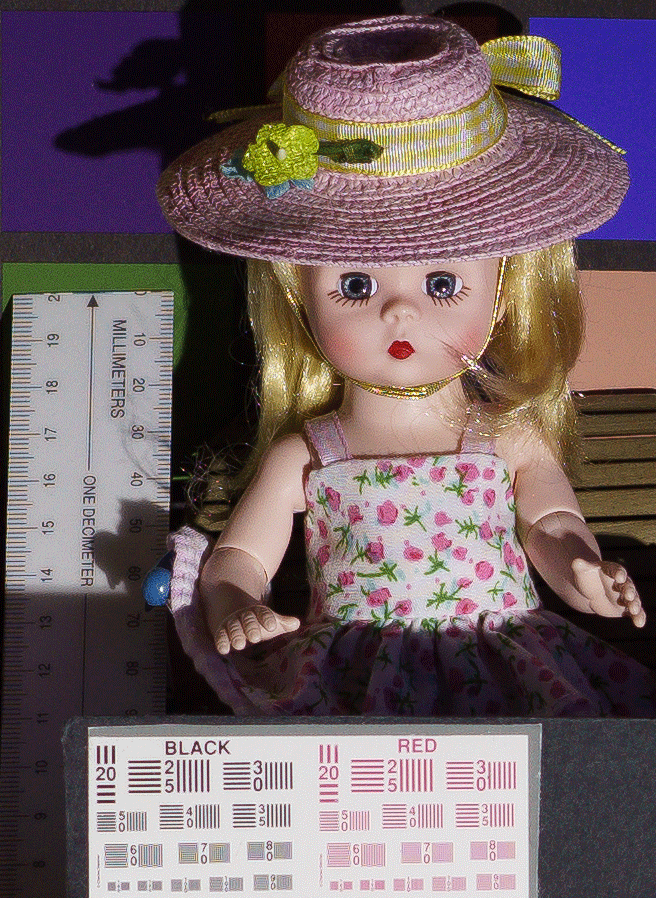Reader Comment on Sony A7R Shutter Vibration
Get the Sony A7 and A7R and lenses at B&H Photo.
Professional camera gear needs to work without surprises or gotchas under a variety of conditions, a concept frequently evaded on the internet. A real pro can lose a job or reputation by having bad gear selection judgment.
It is by shooting intensively for many years that pros learn what works and what does not, and just how fallible quick “works for me” tests are (especially for lenses): if case A is fine, it says nothing about cases B and C (it is also why thin-slice-of-the-apple lab tests of lenses merit small attention—they are not only limited in scope but sometimes misleading, the Nikon 58/1.4G being an extreme recent example, but that is out of scope here).
As in math, showing that ten specific cases succeed is not a proof and can never be; it shows only that those ten specific cases work. But showing that a single case fails disproves a theorem.
In photography, it might be a satisfactory tradeoff to have ten cases work and one or two problem areas, but not if your needs involve those one or two. Understanding those failure points can be a critical decision point for a pro.
A non-camera example— about a decade ago, my cell phone would not make or receive calls near my home, yet it showed 5 bars of signal and had a 1/4 mile direct line of sight to the cell tower.
I called the cell company many times (over an 8 month period), finally being told in so many words that I was a god-damned idiot and nuisance, and that their gear was working fine, and to please not call again it was my own phone at fault.
I finally met a mountain biker while riding who happened to work for Cingulair (now AT&T). He came by and verified the problem—impossible to make or receive a call on his phone either, which also showed max signal.
As it turns out, Cingulair test protocol meant driving by in a truck and looking at signal strength, but never making or receiving a cell phone call (stupid beyond belief as a test protocol IMO). As it turns out, one hemisphere of the receiver was *turned off*, thus an entire 180° was unable to “see” any cell phones.
That Cingulair-employee mountain biker got the receiver turned on, problem solved.
Extrapolating from the wrong test (“works for me”) is an error in logic.
But I digress. The note from Bill H hits the nail on the head.
Reader Bill H writes:
You posted the best interactive example of shutter vibration degradation I’ve seen.
[Editor: that link above leads to the studio assessment (dolls) in Guide to Mirrorless, and was done with my best gear to favor the camera].
When I click on the image to go to 100%, put my cursor over 1/400th second shutter speed, then move the cursor to 1/100th of a second, the difference is striking. Another way to look your examples is to imagine this is a test of copies of the same lens. The difference would matter to most everyone. Only now the camera is the lens, and that poses a dilemma.
I do hope you have shared this example with Sony.
Thanks it was very creative and insightful (and perhaps born of frustration to make some people understand what you were seeing),
DIGLLOYD: It is an excellent example using my heaviest tripod and head, and as noted, 36 megapixels becomes ~24 in resolving power terms (even less in the field, perhaps 36 down to 12), due to this shutter vibration.
I have shared with Sony.
I make no statement either way on handheld usage as yet. I suspect that handheld usage might be less prone to vibration than a tripod setting, via the damping provided by a good grip and pressure against the forehead (via eye against EVF). Also, more mass helps, including larger and heavier lenses on a rail setup.
I have some hope that Sony will fix the issue via firmware.
James K, a NYC pro writes:
James K switched to the A7 (vibration-free EFC shutter) from the A7R after finding shutter vibration issues.
I love some of the testers that found no degrading effects from shutter shock in the A7R. They must work for Sony. The Japanese rarely admit errors. As you know Saving Face is big in Japan.
Try the "I bet my job" that this shutter does not cause image degradation. All your client would have to say on your big location shoot is "do a long tele shot to add some image compression we have it". Dead man walking.
It is important to completely trust your equipment. More often than not, the shot that is degraded is "the one'.
If you don't have a lot riding on your photos it might not matter. Think of a National Geographic photographer who has been in a blind in Tibet waiting for weeks to get what he came for, only to find that his one opportunity was blown by equipment failure. How long do you think he will have his job?
DIGLLOYD: the reality of pro work.
But even if the shot is personal one of my daughter, she grows up. That one special moment might not happen again for a long time as teenagers are camera-averse. Ditto for that one magic personal moment on a trip. The loss can be personal, not financial.

























